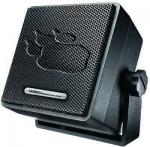 In this post, I’ll discuss the term “speaker wattage”. I will also offer some advice about how to determine how much wattage you’ll need in a specific environment.
In this post, I’ll discuss the term “speaker wattage”. I will also offer some advice about how to determine how much wattage you’ll need in a specific environment.
When you are shopping for a speaker, you will usually notice the wattage rating given by the manufacturer of the speaker. In most cases, you’ll see two rating. The first rating is often called the “RMS wattage”. This number shows how much power the speaker is able to endure continuously without being damaged. The other spec is called “peak speaker wattage”. This term shows how much power you can drive the speaker at for short bursts of time. The peak wattage may be a bit misleading since there is no clear definition of how long these bursts can be. However, please note that most music signals do have short bursts of energy which are much larger than the average power. As such you’ll need to make sure that the speaker can handle such peaks.
When buying a speaker, you’ll need to figure out the wattage that you will require. If you already have a power amplifier then you could just use the amplifier rating as a reference and get a speaker that has a wattage rating which is fairly close to that of the amplifier. Alternatively you should figure out whether the speaker will be used indoors or outdoors and how large the environment is in which you’ll be setting up the speaker. An outdoor environment requires significantly higher power than an indoor space since the sound is dissipating freely rather than being reflected by walls. Also, the larger the space the more power you’ll need. Small spaces usually require no more than 10 Watts while large areas may need several hundred watts for the speaker to be loud enough.


